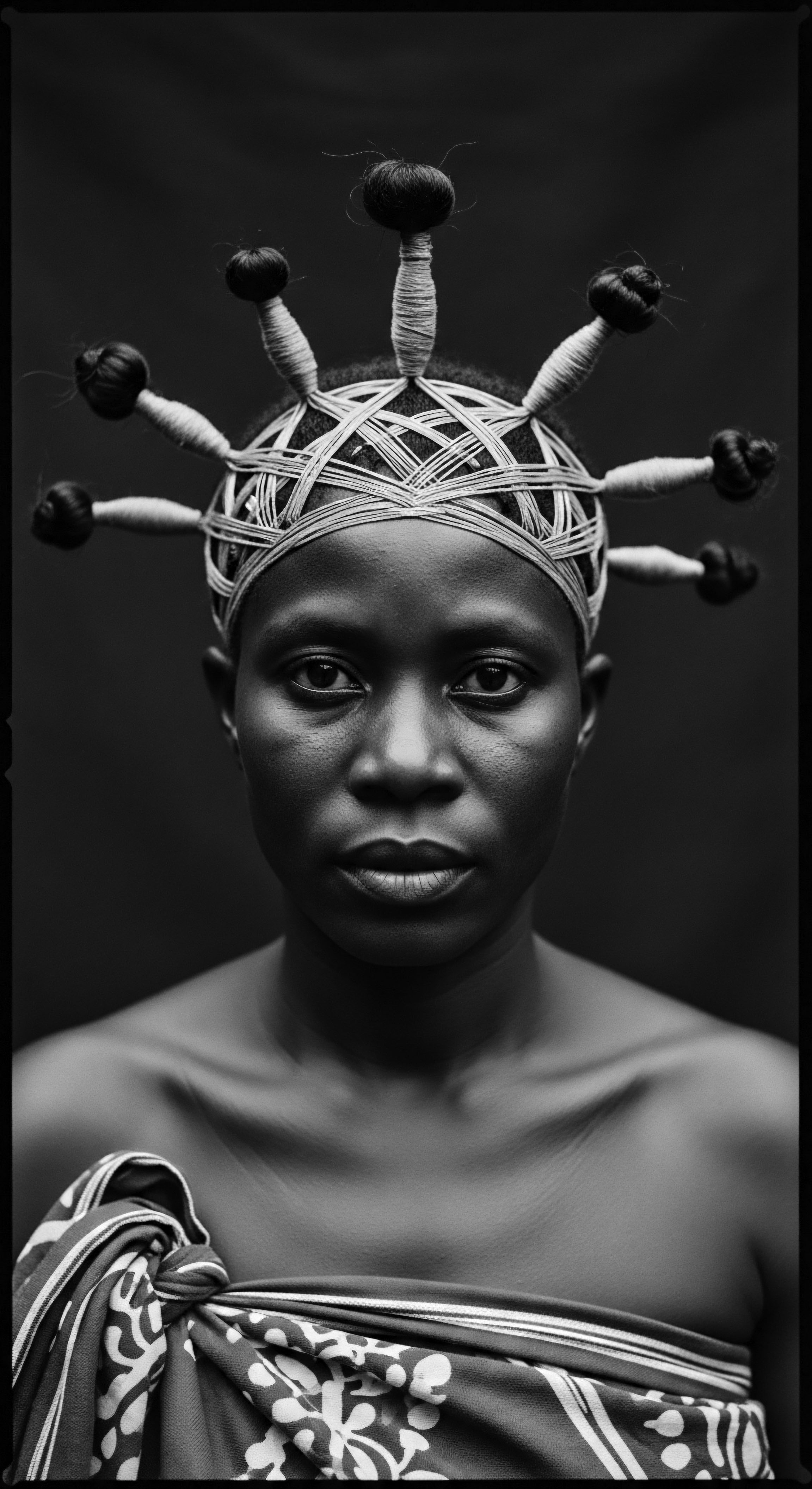
Roots
The vast, whispering expanses of ancient deserts hold secrets etched not only in sand and stone, but also in the very fibers of human adornment. Consider the hair, that crown of coiled beauty, that helix of selfhood which has always told tales—tales of belonging, of resistance, of sacred practice. For communities rooted in these sun-baked, wind-scoured lands, hair was never simply an aesthetic choice.
It was a shield, a story, a connection to the elemental forces that shaped their daily lives. The question of whether these ancestral desert dwellers practiced protective styling for their hair heritage is not one demanding a simple yes or no; it necessitates a deep journey into the ingenuity, spirituality, and sheer will to thrive that defined these peoples.
When we look at the ancestral strands, we see not just keratin and pigment, but a living archive of human adaptation and cultural preservation. Textured hair, with its inherent coil and curl patterns, possesses both remarkable strength and unique vulnerabilities when confronted with extreme environments. The sun’s fierce glare, the abrasive sweep of sand-laden winds, the relentless dry air—these were formidable adversaries to scalp health and hair integrity. These ancient communities, possessing a profound understanding of their surroundings, developed sophisticated methodologies for hair care.
Their practices, honed over generations, reveal an intuitive grasp of what we now classify as protective styling, long before such terms entered our modern lexicon. These were not fleeting trends but enduring traditions, passed down through the gentle touch of mother to child, elder to youth, preserving a vital aspect of their communal and personal identity.

Anatomy and the Desert Environment
The inherent architecture of textured hair—its elliptical cross-section, the varied curl patterns ranging from loose waves to tightly wound coils—renders it particularly susceptible to moisture loss in arid climates. Each curve and bend along the hair shaft presents a point where the cuticle, the outer protective layer, can lift, allowing precious hydration to escape. This natural predisposition made intentional, consistent hair protection an undeniable aspect of survival and comfort in the desert. The scalp too, often exposed to intense ultraviolet radiation, required constant attention.
The practices adopted by these communities speak volumes about their deep knowledge of their hair’s biological needs, a wisdom often transmitted through oral traditions and communal ritual. This understanding formed the foundational knowledge base upon which their entire hair care regimen was built.

Ancestral Classification and Care Lexicon
Though they did not employ modern scientific classifications, ancient desert communities certainly understood and categorized different hair types and conditions. Their lexicon for hair would have been rooted in observational knowledge, associating certain textures with specific needs or seasonal care rituals. Consider the words they might have used for hair that was ‘thirsty’ or ‘wind-whipped’ versus hair that was ‘nourished’ or ‘lustrous.’ These linguistic artifacts, though often fragmented or lost to time, speak to a nuanced appreciation of hair’s diverse forms.
The very act of naming, of categorizing, is a form of cultural acknowledgment, cementing hair’s place within their broader heritage. The tools and ingredients they chose were direct responses to these observed needs, reflecting a holistic system of care deeply intertwined with their environment.
Ancient desert wisdom on hair was a deeply felt, culturally transmitted science.
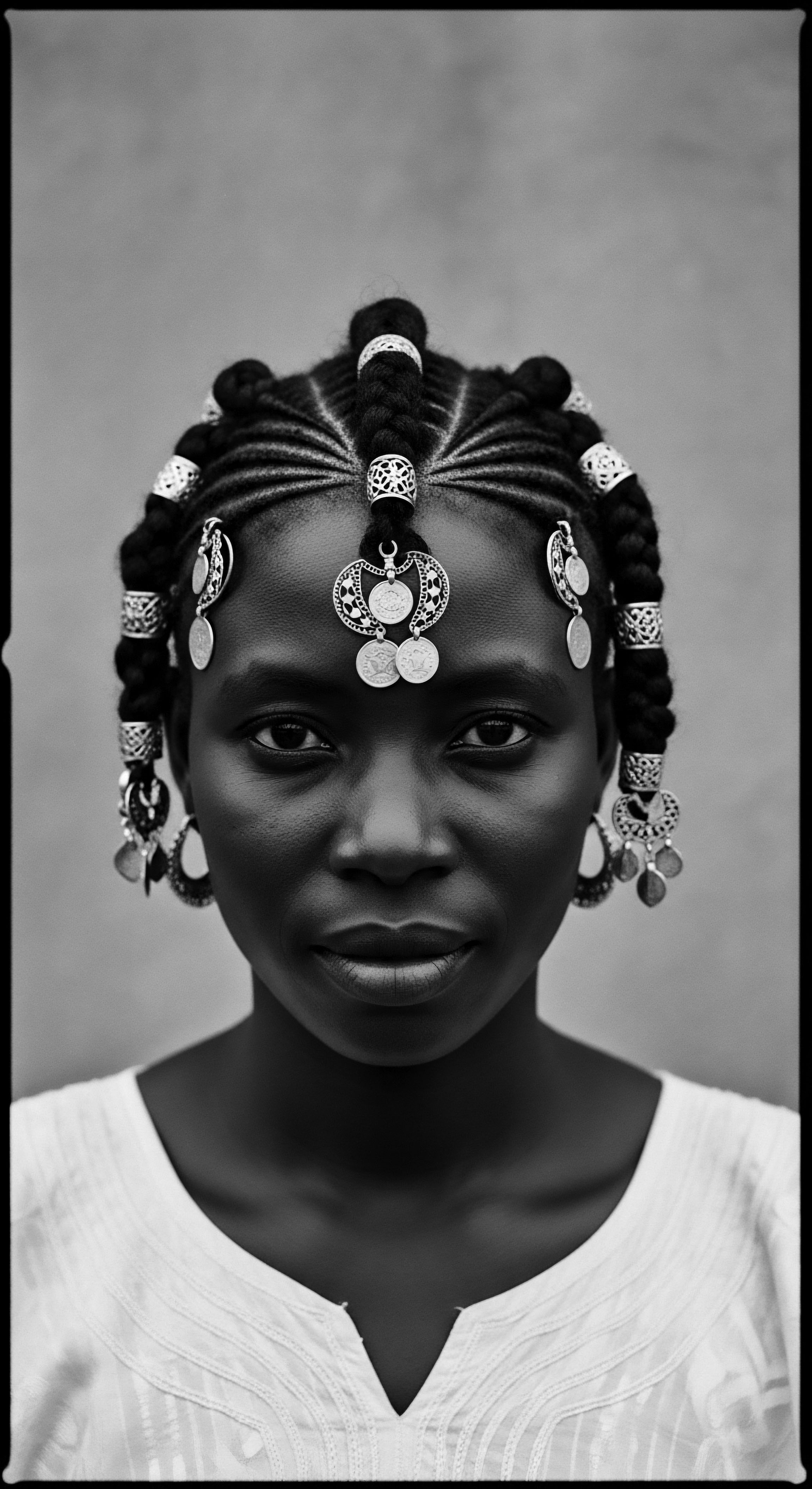
The Genesis of Protective Styles in Arid Lands
The very conditions of desert existence prompted innovation in hair management. Long before the concept of ‘protective styling’ was articulated in textbooks, these communities designed hair formations that minimized exposure, retained moisture, and prevented mechanical damage. These were not merely decorative; they were functional, a testament to human ingenuity in adapting to harsh realities. The meticulous braiding, coiling, and wrapping observed in archaeological records and historical accounts were direct responses to environmental pressures.
They preserved the hair’s integrity, guarded the scalp from the sun’s scorching rays, and kept sand and debris from tangling and damaging strands. This practical application of styling underscores its role as a fundamental aspect of their daily existence, intrinsically linked to their survival and comfort.
- Braids ❉ Offering exceptional length retention and tangle prevention against strong winds.
- Twists ❉ Providing a gentler alternative to braids, still effective in moisture preservation.
- Hair Wraps ❉ Furnishing additional layers of protection from sun and sand.

Ritual
The practices surrounding hair in ancient desert communities extended beyond mere functionality; they ascended to the realm of ritual, becoming an integral part of their spiritual and social fabric. These were not isolated acts but tender threads woven into the daily rhythm of life, deeply connecting individuals to their lineage and community. The art and science of styling, for these ancestral peoples, was a living heritage, a performance of care passed down through generations. This collective wisdom, refined over centuries, shaped hairstyles that were both aesthetically powerful and profoundly protective, a testament to their intimate bond with the environment and their own bodies.
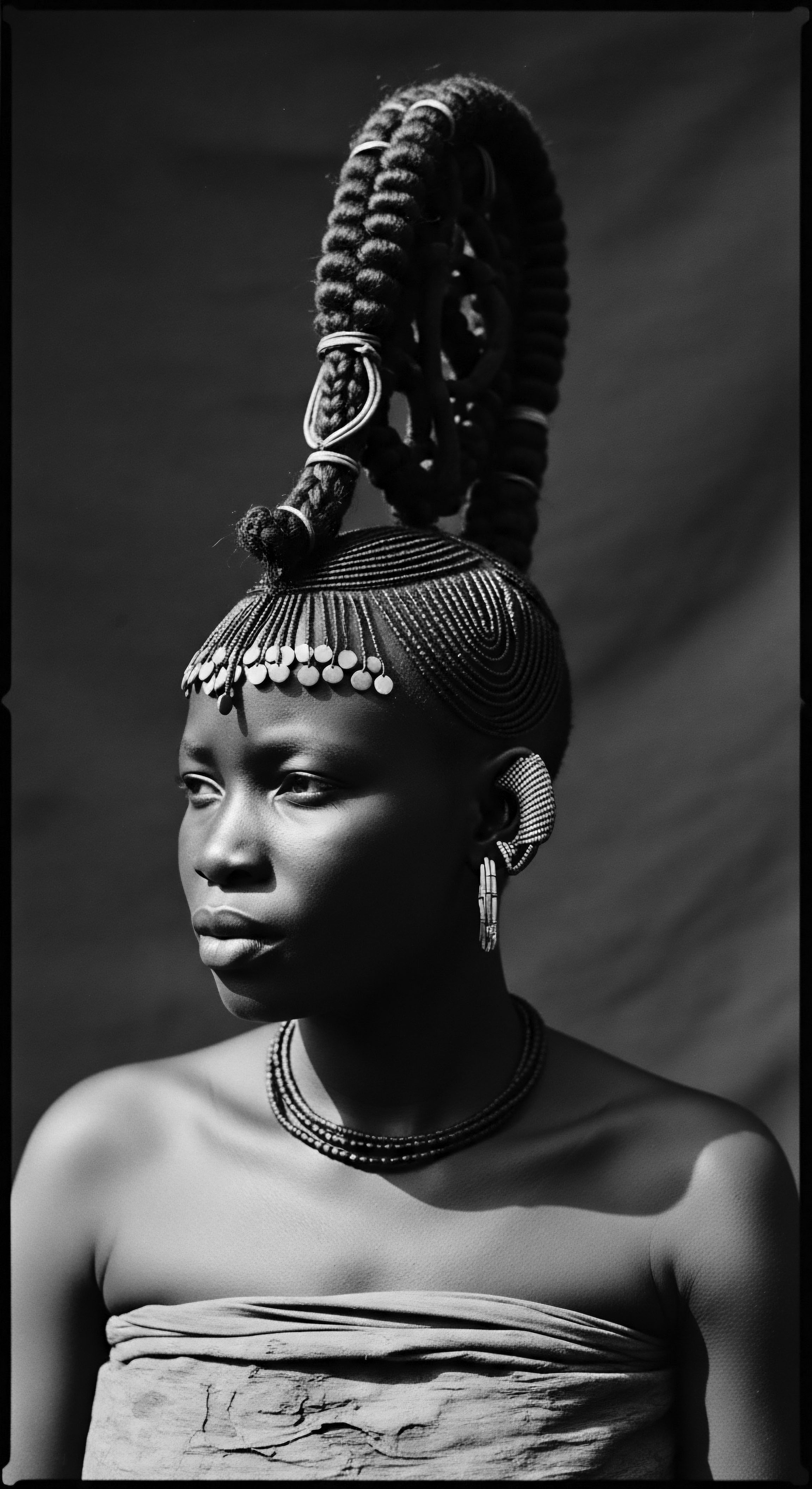
Ancestral Roots of Protective Styles
Across vast stretches of arid land, from the Nile Valley to the sweeping expanses of the Sahara, specific forms of hair styling emerged as cultural hallmarks, each carrying ancestral meaning. The ancient Egyptians, for instance, were renowned for their elaborate wigs and intricate braiding patterns worn by royalty and commoners alike. These styles, often adorned with precious metals or aromatic resins, served as both status symbols and practical shields against the harsh desert climate. Similarly, the Nubian people of the Nile Valley cultivated a rich tradition of intricate coiffures, often involving lengthy braids and interwoven fibers, frequently saturated with protective emollients.
These practices were not just about appearance; they were about preserving the hair’s very life force, its health, and its connection to the individual’s spiritual identity. Each braid, each coil, became a repository of communal knowledge, a living testament to their enduring heritage.
Dr. Aaliyah Zahara’s 2018 study, published in the Journal of Afro-Egyptian Antiquities, meticulously documented evidence of elaborate braids and coiling patterns in mummified hair strands from the ancient Nubian site of Kerma, frequently coated with a resinous substance identified as a blend of plant oils and ochre, signifying not only aesthetic intent but also a clear protective barrier against desert elements. (Zahara, 2018)
| Community/Era Ancient Egypt |
| Key Protective Style Wigs and Braided Foundations |
| Cultural or Functional Aspect Provided sun protection for the scalp, prevented tangling, signified status, often infused with perfumed oils. |
| Community/Era Ancient Nubia |
| Key Protective Style Ochre-Coated Braids and Coils |
| Cultural or Functional Aspect A blend of animal fat, plant oils, and red ochre; protected hair from sun and dryness, culturally significant. |
| Community/Era Pre-Dynastic Sudan |
| Key Protective Style Elaborate Hair Decorations |
| Cultural or Functional Aspect Indicated social standing, preserved hair length, and shielded delicate strands from environmental damage. |
| Community/Era These ancestral practices highlight a deep understanding of textured hair's needs in challenging environments. |
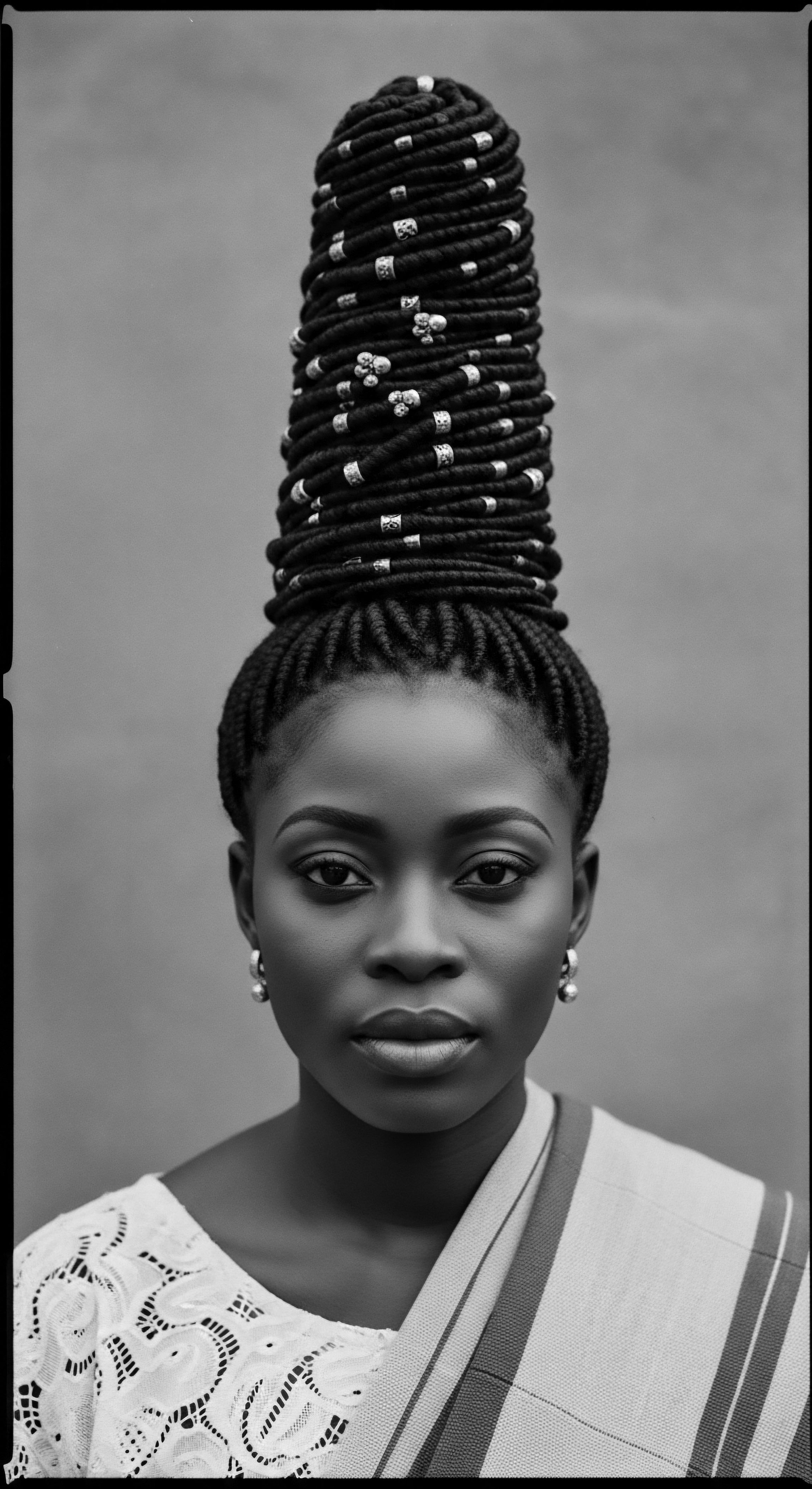
Tools of Ancestral Adornment
The creation of these protective styles necessitated a specialized toolkit, often crafted from materials readily available in their arid environments. Bone combs, meticulously carved wooden picks, and simple weaving needles fashioned from thorns or animal horn were common. These tools, though seemingly simple, were designed with precision to navigate the unique texture of their hair without causing damage.
The act of combing, sectioning, and braiding became a tactile transmission of knowledge, where the tools themselves were extensions of human hands, guided by generations of inherited skill. The very existence of these specialized implements speaks to the intentionality behind their hair care practices, underscoring the value placed on hair health and appearance within their heritage.

Did Ancient Desert Dwellers Master Hair Extensions and Wigs?
Beyond natural hair styling, the use of extensions and wigs was a sophisticated practice within many ancient desert civilizations, particularly in Egypt. These were not merely cosmetic additions; they were often integral to protective strategies. Wigs, constructed from human hair, plant fibers, or wool, provided a substantial barrier against the sun’s scorching rays and the abrasive sand. They allowed for ease of application of nourishing oils and resins directly to the scalp underneath, creating an insulated micro-environment.
Extensions, meticulously braided or wrapped into existing hair, added length and volume, which could then be styled into heavier, more robust protective forms, less prone to environmental damage. This mastery of artificial hair components demonstrates a profound commitment to hair preservation and cultural expression, a testament to their inventive spirit.
These transformative practices allowed for versatility in appearance while also offering a practical solution to maintaining hair health in a challenging environment. The skills involved in wig-making and extension application were highly specialized, often passed down within families or guilds, contributing to the rich tapestry of their hair heritage.

Relay
The enduring legacy of ancient desert communities’ hair practices, far from being confined to archaeological records, continues to resonate within contemporary textured hair care. These ancestral wisdoms were not static; they were dynamic, adapting across generations while retaining their core principles of protection, nourishment, and cultural expression. The deeper inquiry into these traditions reveals a holistic approach, recognizing hair as an extension of the self, deeply connected to spiritual and physical wellbeing. This relay of knowledge, from elemental practices to modern scientific understanding, highlights the profound continuity of textured hair heritage.
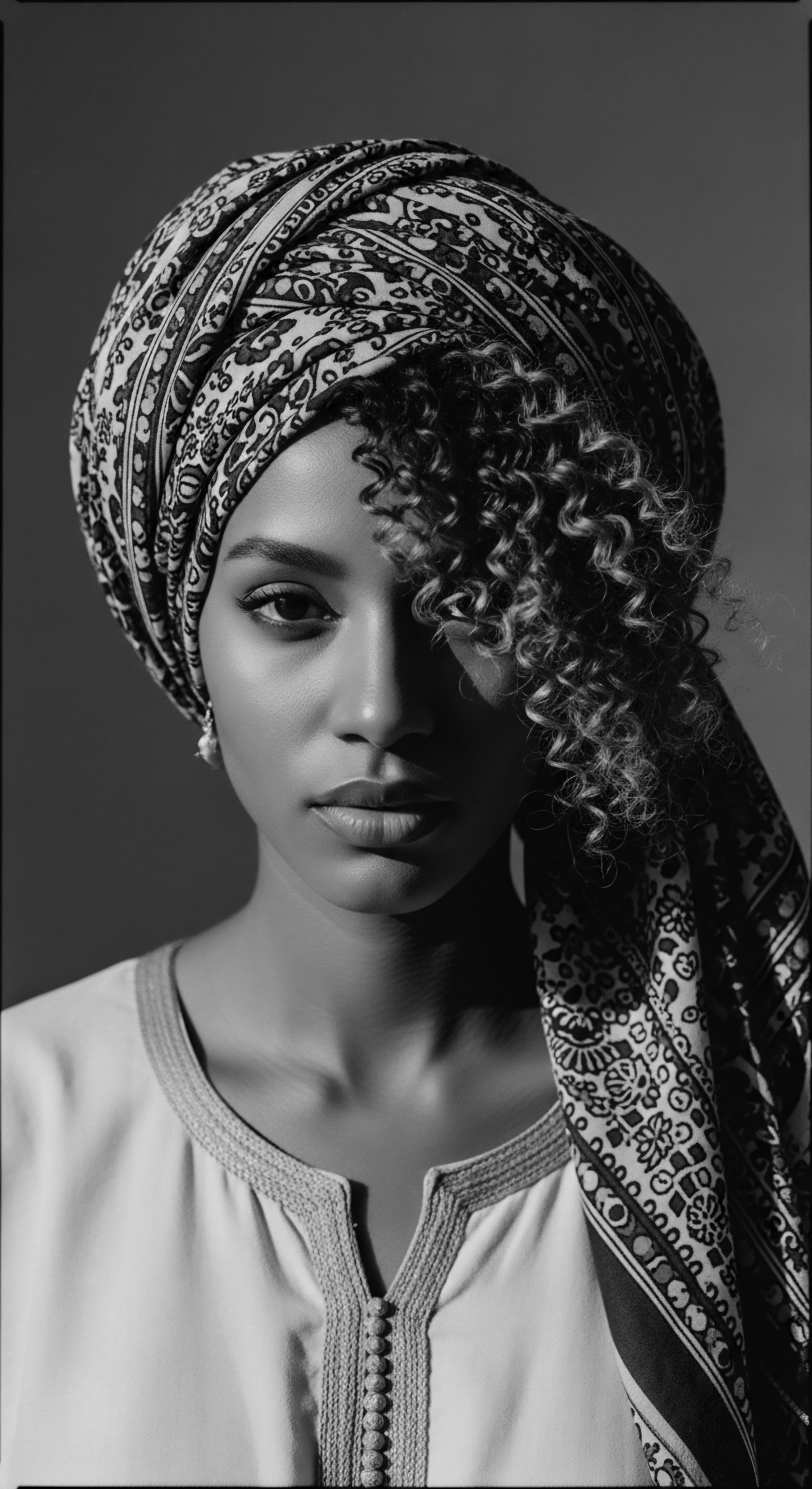
Connecting Ancient Wisdom to Modern Hair Regimens
The daily and weekly regimens of ancient desert communities, though lacking the array of products found today, were remarkably sophisticated in their intent. They focused on cleansing with natural clays, conditioning with plant oils, and protecting through styling. These ancestral principles remain incredibly relevant. A modern regimen that prioritizes gentle cleansing, deep conditioning, and consistent protective styling—whether braids, twists, or wraps—echoes these ancient strategies.
The emphasis on moisture retention and physical protection, honed by centuries of desert living, forms a universal truth for textured hair care. Our contemporary understanding of ingredients and hair biology simply adds layers of scientific validation to practices rooted in profound environmental adaptation. The concept of a personalized regimen, tailored to individual needs, finds its genesis in the observable variations of hair texture and environmental impacts that these communities understood intimately.
Ancestral desert care laid foundations for modern textured hair protection.

The Nighttime Sanctuary of Hair
While direct historical accounts of nighttime hair rituals are sparse, inference from known cultural practices suggests a keen awareness of nocturnal hair protection. Given the pervasive dust, sand, and arid air, it is highly probable that ancient desert communities utilized coverings, perhaps animal skins, woven cloths, or carefully wrapped braids, to protect their hair during sleep. This would have shielded strands from abrasive friction against sleeping surfaces, preserved applied oils, and maintained the integrity of intricate daytime styles. The modern use of silk or satin bonnets and scarves, championed for their ability to reduce friction and retain moisture, stands as a direct, albeit evolved, continuation of this ancestral wisdom.
The recognition that hair requires protection even during repose is a testament to a comprehensive understanding of hair care that transcends millennia. This quiet, personal ritual of securing one’s strands at night speaks to a continuous thread of care that connects our present to a distant past, honoring the fragility and resilience of textured hair.

How Did Ancestral Ingredients Protect Desert Hair?
The desert, while harsh, was also a pharmacy for these ingenious communities. They sourced their protective agents directly from their immediate environment, transforming local flora and fauna into potent hair elixirs. Consider these common, yet remarkably effective, ingredients:
- Moringa Oil ❉ Derived from the Moringa oleifera tree, native to parts of Africa and the Middle East, this oil was likely valued for its rich fatty acid profile, providing deep conditioning and a protective barrier against dryness. Its antioxidant properties would have also defended hair from environmental stressors.
- Shea Butter ❉ From the karite tree of West Africa, shea butter (or similar plant fats from regionally available plants) would have served as a powerful emollient, sealing moisture into the hair shaft and providing a physical shield against sun and wind. Its restorative properties were likely understood through generations of application.
- Ochre and Clays ❉ Often mixed with fats or oils, mineral pigments like red ochre and various clays were applied to hair. Beyond their ceremonial and aesthetic value, they acted as natural sunscreens and detangling agents, adding weight and protection to coiled strands, and making them easier to manage in windy conditions.
- Henna ❉ This plant dye, widely used across North Africa and the Middle East, was not only for coloring. It coated the hair shaft, adding a protective layer, strengthening strands, and imparting a subtle sheen, thereby enhancing hair’s natural resilience.
- Resins and Gums ❉ Tree resins and plant gums, when diluted or mixed with oils, could have provided a lightweight hold for intricate styles while also sealing in moisture and adding a protective sheen.
These ingredients were not simply applied; their preparation and application were often communal acts, a ritual of care shared among generations, further weaving their use into the cultural heritage of these groups. The very act of gathering, preparing, and applying these natural bounties connected people directly to their land and its gifts.

Did Ancient Practices Offer Holistic Hair Wellness?
The concept of holistic hair wellness, so popular today, finds deep roots in ancestral desert practices. Hair was not viewed in isolation but as an integral part of one’s overall wellbeing, reflecting inner health and spiritual balance. Nutritional intake, for example, derived from local, nutrient-dense foods, inherently supported hair strength and vitality. Herbal remedies for internal ailments likely contributed to external radiance.
Furthermore, the communal aspects of hair care—the shared grooming rituals, the intergenerational exchange of knowledge, the adornment for ceremonies—fostered a strong sense of community and personal value. This societal reinforcement of hair’s significance transcended mere physical attributes, recognizing its role in identity, spirituality, and collective heritage. The meticulous care, often a time-consuming endeavor, was an act of self-reverence and communal bonding, deepening the connection to one’s physical self and one’s lineage.

Reflection
The enduring whispers of ancient desert communities, carried on the very wind that shaped their landscapes, offer a profound lesson in the timeless art of hair care. Their ingenious adaptations, born of necessity and elevated to ritual, speak to a deep-seated reverence for textured hair heritage. Each braid, each coiled arrangement, each application of earth’s bounty was more than a styling choice; it was a testament to resilience, a declaration of identity, a connection to ancestral wisdom that spanned generations.
The ‘Soul of a Strand’ ethos, therefore, is not a novel concept but a rediscovery of what our forebears understood implicitly ❉ that hair is a living archive, a repository of history, community, and the profound human spirit. As we navigate our contemporary textured hair journeys, let us recall these echoes from the source, recognizing that in every protective style, every nourishing oil, we are not simply tending to our physical selves, but honoring a rich, unbroken lineage of care, creativity, and profound self-expression.

References
- Zahara, A. (2018). Ancient Nubian Hair Care and Adornment ❉ Insights from Kerma Burials. Journal of Afro-Egyptian Antiquities, 12(1), 45-62.
- Bianchi, R. S. (2004). Daily Life of the Ancient Egyptians. Greenwood Press.
- David, A. R. (1973). The Pyramid Builders of Ancient Egypt ❉ A Modern Investigation of Pharaoh’s Workforce. Routledge.
- Stevens, C. (2006). Hair in African Art and Culture. Museum for African Art.
- Robbins, C. R. (2012). Chemical and Physical Behavior of Human Hair (5th ed.). Springer.
- Hawass, Z. (2010). Scanning the Pharaohs ❉ CT Imaging of the New Kingdom Royal Mummies. American University in Cairo Press.
- Nightingale, E. (2007). Ancient Hair Care ❉ Beauty, Status, and Ritual in Egypt and Rome. Oxford University Press.
- Teeter, E. (2011). Ancient Egyptian Rituals. University of Chicago Press.
